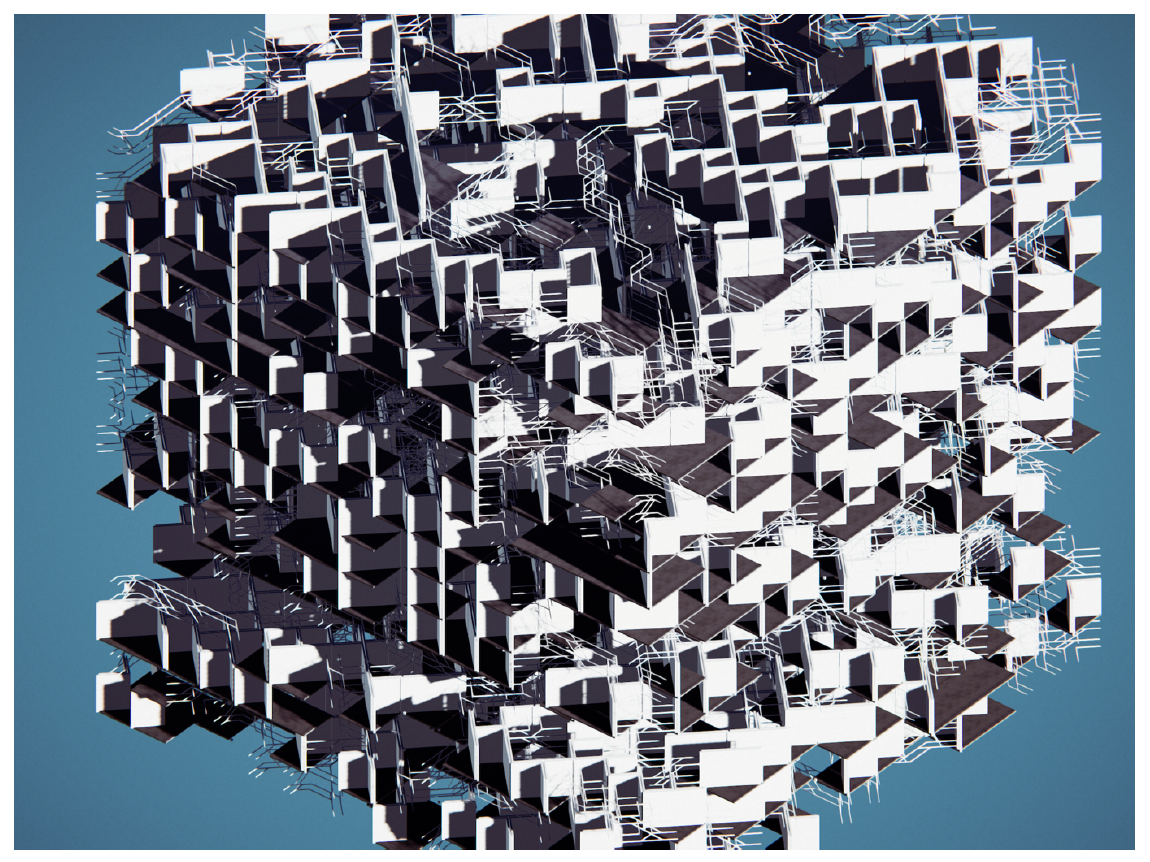Difference between revisions of "From Intuition to Randomness: Combinatorics as Architectural Design Methodology in the Wave Function Collapse Algorithm"
From Design Computation
Abel Maciel (talk | contribs) |
Abel Maciel (talk | contribs) (→Abstract) |
||
| Line 10: | Line 10: | ||
=Abstract= | =Abstract= | ||
| − | + | Architectural design methods have doubtlessly changed due to the digital paradigm shift. The linear workflow of design turned to a loop and the level of human abstraction in each design phase are led by algorithmic computation. Facing this phenomenon is a puzzle for many professionals. Instead of designing the exact output of an architectural work digital allows to plan the method of creation with possibly similar but not necessarily identical results. This paper through the examination of the Wave Function Collapse algorithm highlights the ideological tensions compared to the traditional design process by showing how the human intuition can turn to machinic randomness. | |
=Presentation= | =Presentation= | ||
Revision as of 17:18, 23 April 2022
DC I/O 2021 Paper by MELINDA BOGNÁR.Abstract
Architectural design methods have doubtlessly changed due to the digital paradigm shift. The linear workflow of design turned to a loop and the level of human abstraction in each design phase are led by algorithmic computation. Facing this phenomenon is a puzzle for many professionals. Instead of designing the exact output of an architectural work digital allows to plan the method of creation with possibly similar but not necessarily identical results. This paper through the examination of the Wave Function Collapse algorithm highlights the ideological tensions compared to the traditional design process by showing how the human intuition can turn to machinic randomness.
Presentation
Conference Paper
Keywords
PENDING
Reference
DOI: https://doi.org/10.47330/DCIO.2021.ZPDW5322
Bibliography
PENDING

